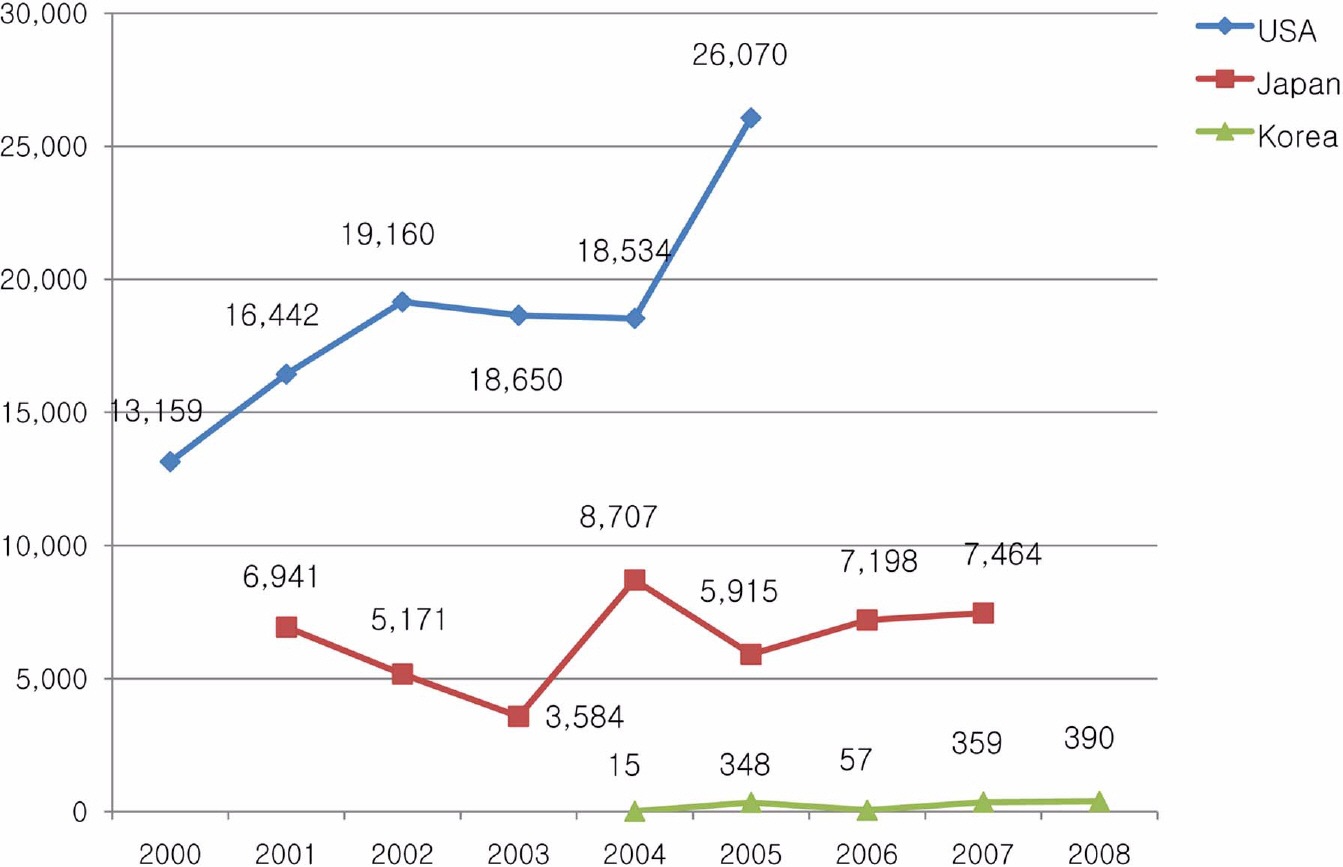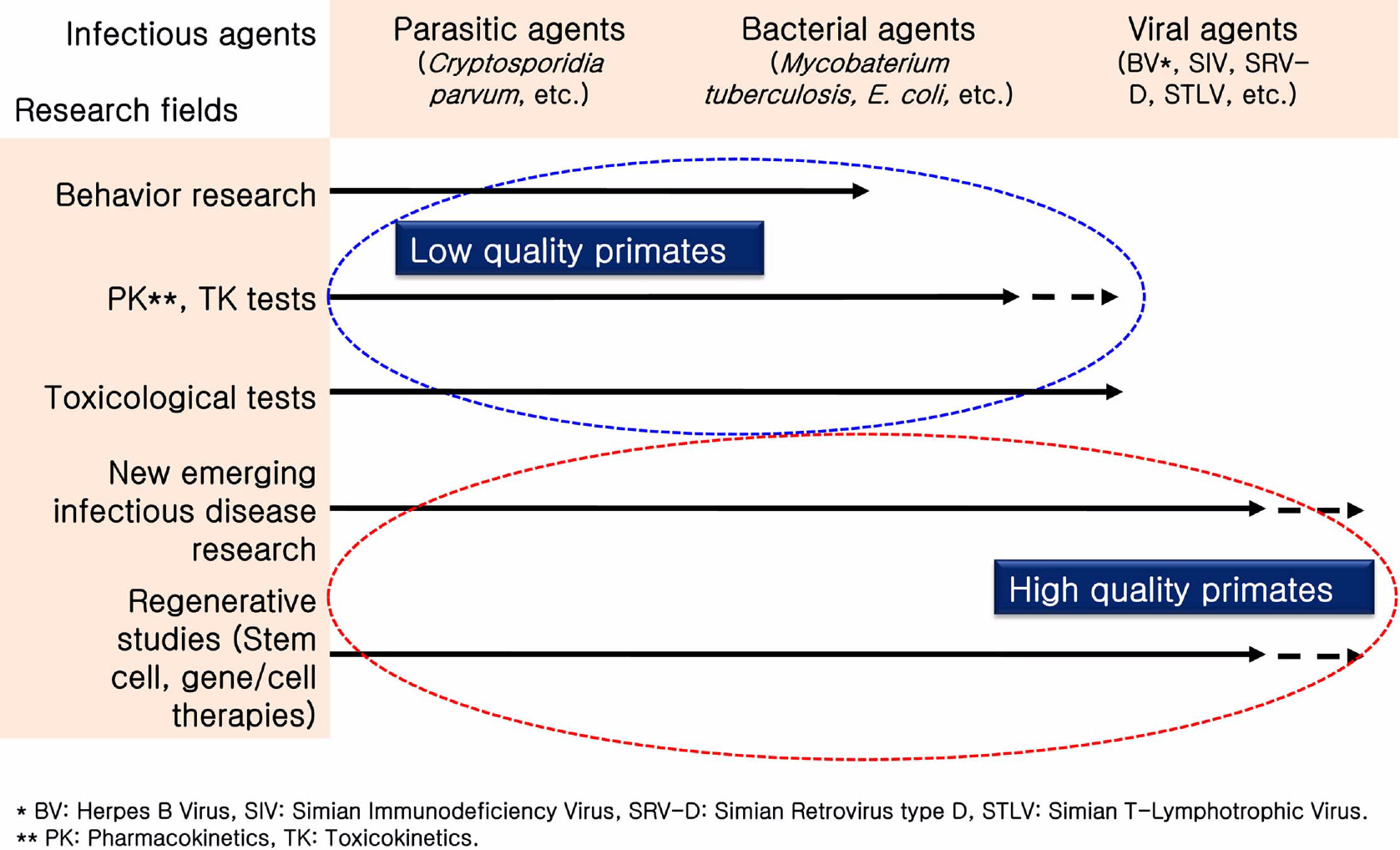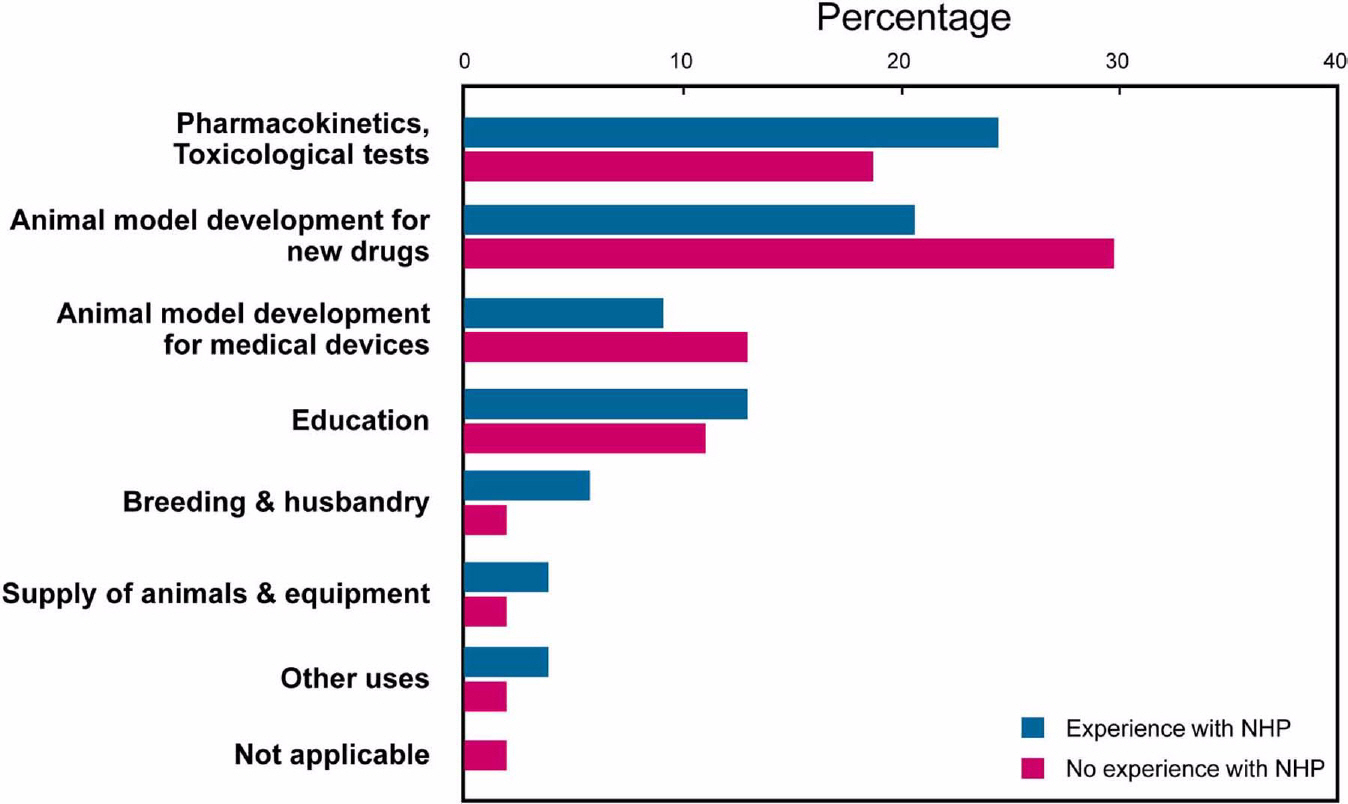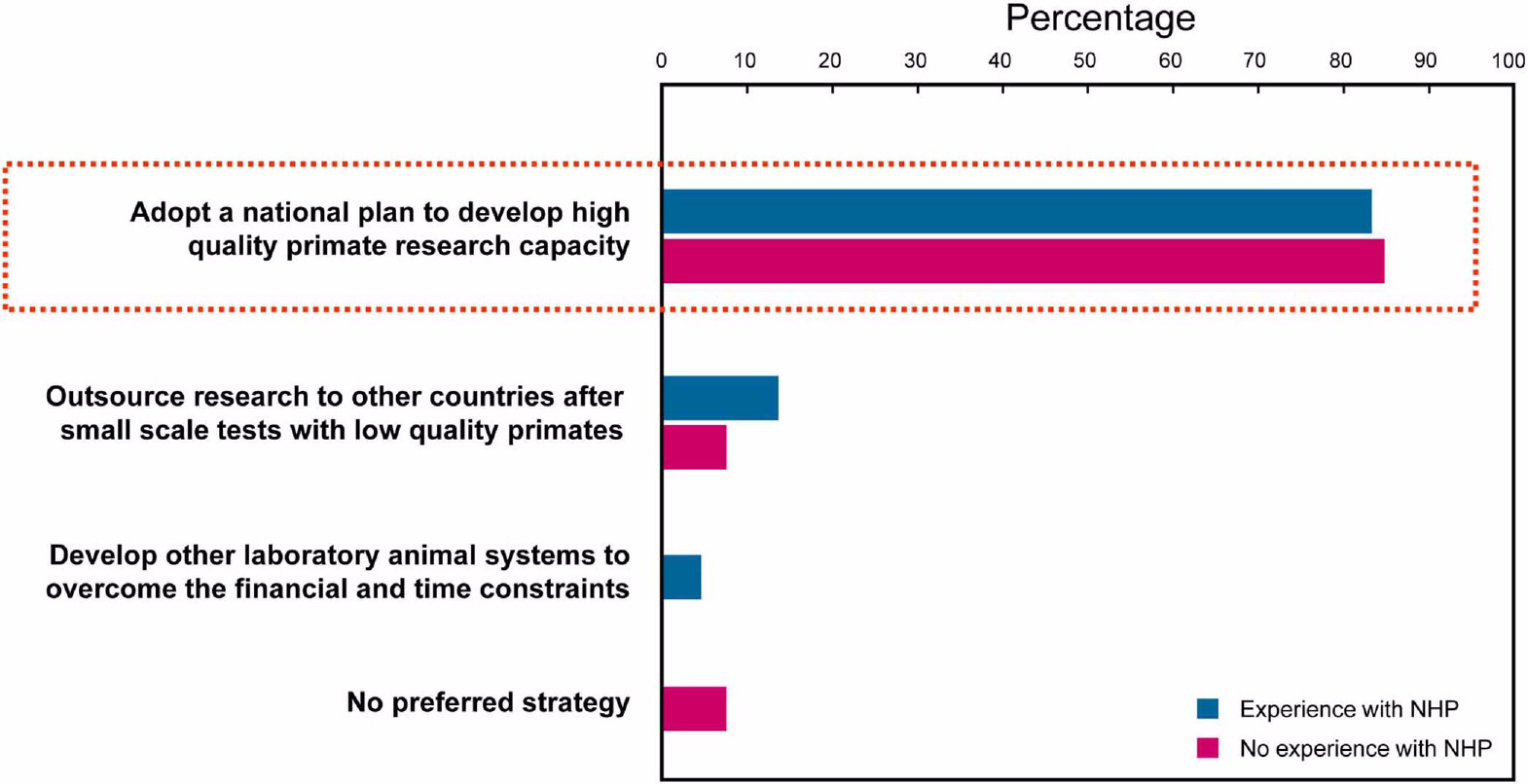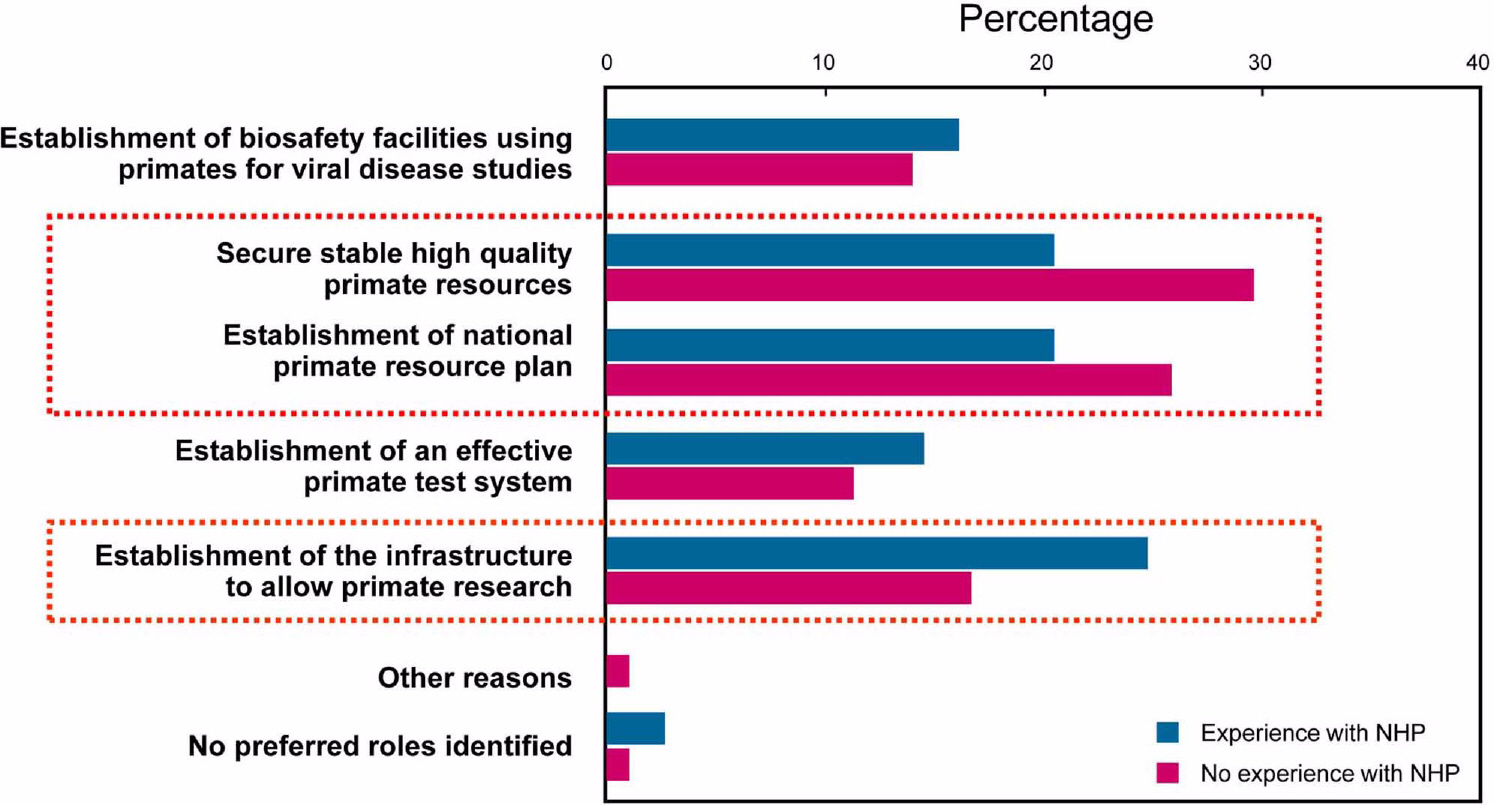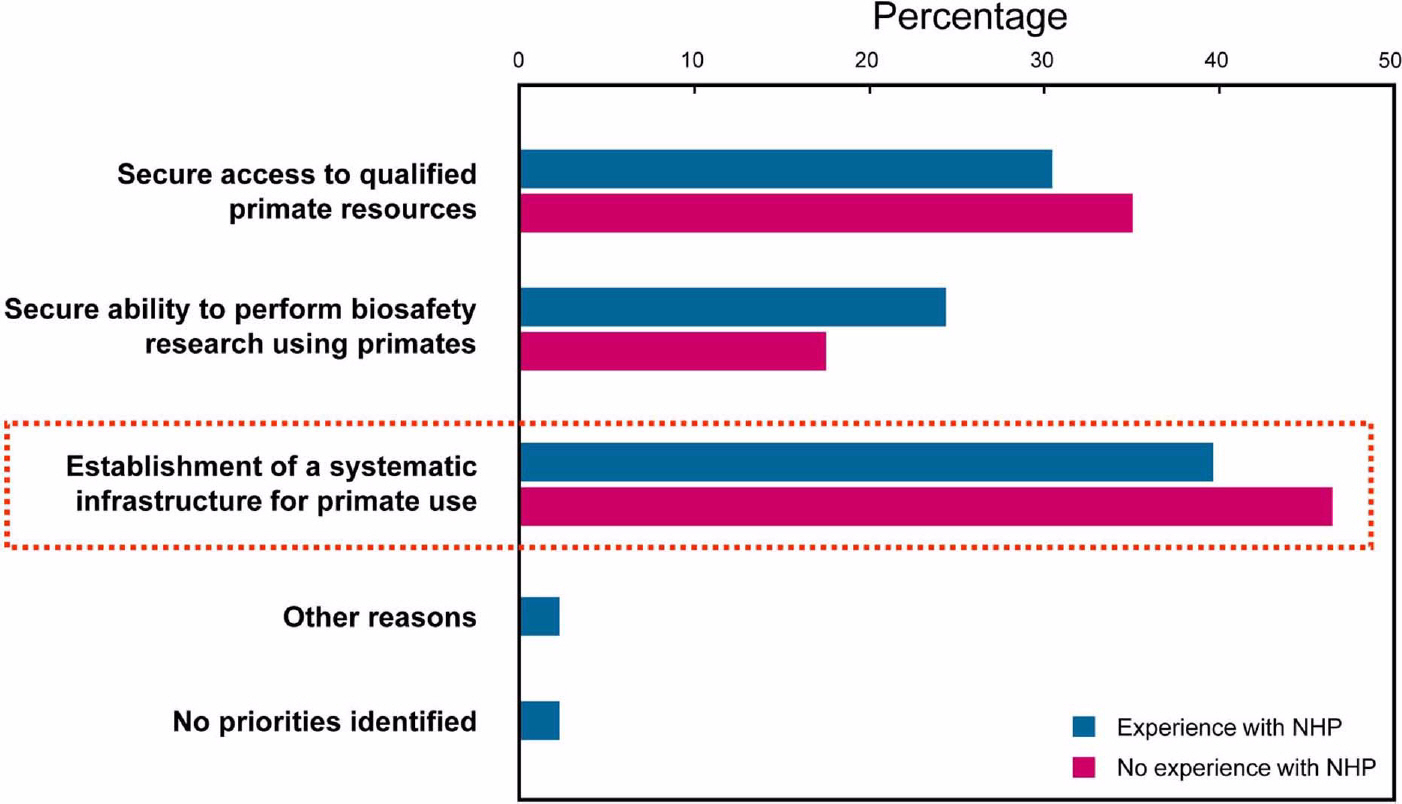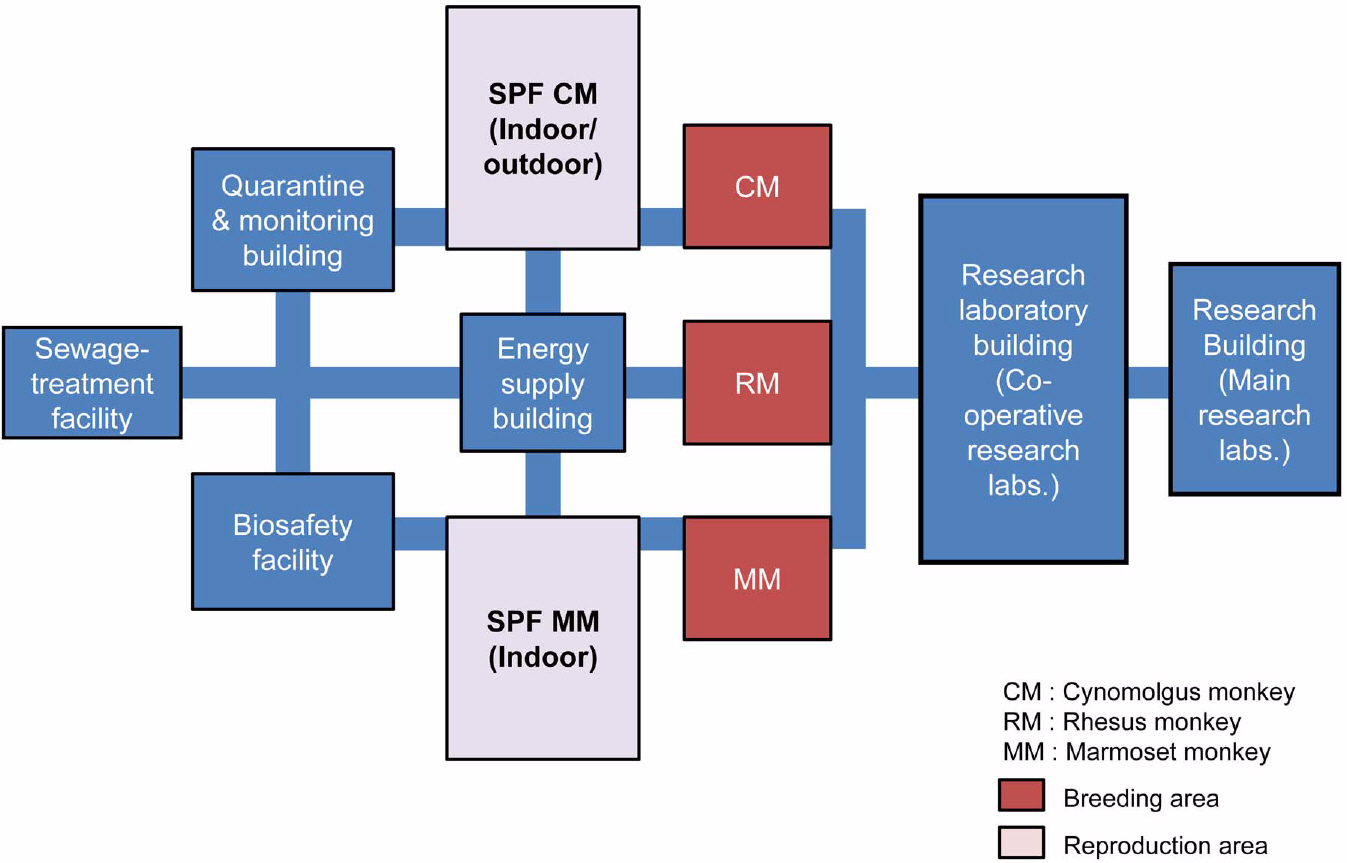Lab Anim Res.
2010 Dec;26(4):449-457. 10.5625/lar.2010.26.4.449.
Establishment of a Research and Assessment System Using High Quality Non-Human Primates
- Affiliations
-
- 1Disease Model Animal Center, Korea Research Institute of Bioscience and Biotechnology, Daejeon, Korea. hyunbh@kribb.re.kr
- 2Clinical Research Institute, Seoul National University Hospital, Seoul, Korea.
- 3Laboratory Animal Research Team, National Institute of Food and Drug Safety Evaluation, Seoul, Korea.
- 4Department of Biological Sciences, College of Natural Sciences, Pusan National University, Pusan, Korea.
- 5Department of Medical Genetics, College of Medicine, Hallym University, Chuncheon, Korea.
- 6Tsukuba Primate Research Center, National Institute of Biomedical Innovation, Tsukuba, Japan.
- KMID: 2114716
- DOI: http://doi.org/10.5625/lar.2010.26.4.449
Abstract
- At present, eight non-human primate research facilities exist in Korea to examine the validity and safety of new bio-products, and to generate model animal systems using primates of low health status (low quality primates). However specific-pathogen free (SPF) primates (high quality primates) are the preferred choice for emerging disease studies and for numerous other research areas, including cell/gene therapy, stem cell research, regenerative studies, and brain science. Although international primate centers in developed countries have utilized high quality primate resources for many years, there has been little or no collaboration with less developed countries on primate research. Due to this, the establishment of a high quality primate research capacity is a core priority for the advancement of the biomedical research field in less developed countries. In this study, we investigated the demand for, and opportunities to support the development of this research capability.
MeSH Terms
Figure
Reference
-
References
Agy, M. (. 2004. ). Colony Health Diagnostic Laboratory, pp. 488–506. Washington National Primate Research Center, PHS 398/2590 (Rev. 09/04), Seattle.Capitanio, J.P., Kyes R.C. and Fairbanks, L.A. (. 2006. ). Considerations in the selection and conditioning of old world monkeys for laboratory research: animals from domestic sources, ILAR. 47(4):294–306.Douagi, I., Forsell, M.N., Sundling, C., O'Dell, S., Feng, Y., Dosenovic, P., Li, Y., Seder, R., Loré, K., Mascola, J.R., Wyatt, R.T. and Karlssson Hedestam, G.B. (. 2010. ). Influence of novel CD4 binding-defective HIV-1 envelope glycoprotein immunogens on neutralizing antibody and T-cell responses in nonhuman primates. J. Virol. 84(4):1683–1695.Fortman, J.D., Hewett, T.A. and Bennett, B.T. (. 2002. ). The Laboratory Nonhuman Primate. pp. p. 223–226. CRC press, Boca Raton.Friedrich, T. and Watkins, D.I. (. 2002. ). Influence of MHC Gene Products on Immune Control of AIDS Virus Infection; Consideration for Use in Nonhuman-Primate Resouces, In International Perspectives: The Future of Nonhuman Primate Resources, pp. 122–127. The National Academies Press, Washington DC.Hyun, B.H. 2001. ) Development of Basic and Applied Technology for Primate Rresearch, pp 37–511, Ministry of Science & Technology, Seoul.Hyun, B.H. 2004. ) Use of Laboratory Primate and Roll of Korean National Primate Research Center,. http://www.bioin.or.kr/board.do?num=116293&cmd=view&bid=industry&cate1=. &cate2=&s_key=&s_str=&page=124&sdate=&edate=, Biozine, Daejeon.Hyun, B.H. (. 2009. ). Feasibility Study to Establish the Research and Assesment System Using NonHuman Primate, pp. 8, Korea Food & Drug Administration, Seoul.Mansfield, K. (. 2002. ). Specific Pathogen-Free Rhesus Macaques, In International Perspectives: The Future of Nonhuman Primate Resources, pp. 160–173. The National Academies Press, Washington DC.Mansfield K. (. 2005. ). Development of Specific Pathogen-Free Nonhuman Primate Colonies, Nonhuman Primate Resources, In The Laboratory Primate, pp. 229–239. Elsevier, London.Morton, W.R., Kyes, K.B., Kyes, R.C., Swindler, D.R. and Swindler, K.E. (. 2005. ). Use of the Primate Model in Research, In The Laboratory Primate, pp. 405–415. Elsevier, London.Pamunkas, J. and Sajuthi, D. (. 2002. ). Sustainable Primate Resources through SPF Breeding Programs in Indonesia, In International Perspectives: The Future of Nonhuman Primate Resources, pp. 20, The National Academies Press, Washington DC.Yanwei, L. 2004. ) Quality of Laboratory Primates in China, In Conference for Laboratory Animal Science and Technology, pp 151, JALAS proceeding, Nagasaki.Yoshida, T. and Fujimoto, K. (. 2006. ). The TPRC Handbook on the Care and Management of the Laboratory Cynomolgus Monkey. pp. p. 1–3. 63–65,. Springer;Japan, Tokyo:
- Full Text Links
- Actions
-
Cited
- CITED
-
- Close
- Share
- Similar articles
-
- A Review of Quality Management and Improvement of Trauma Fee Schedule in Regional Trauma Center
- Mouse models for hepatitis B virus research
- Establishment, Present Condition, and Developmental Direction of the New Korean Healthcare Accreditation System
- Molecular Epidemiology of Human Immunodeficiency Virus
- Assessment and research of quality of life in gynecologic cancer patients

